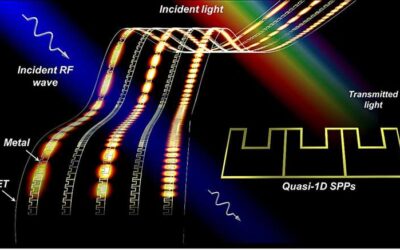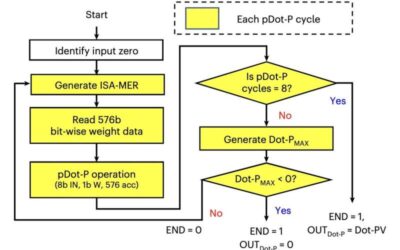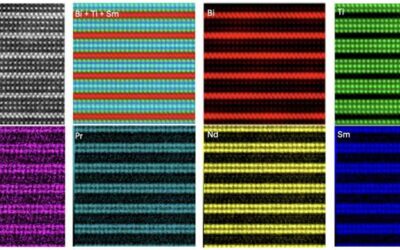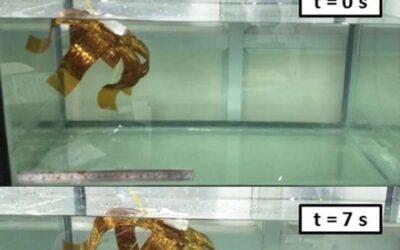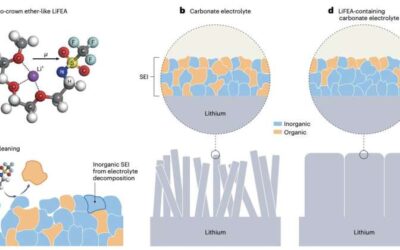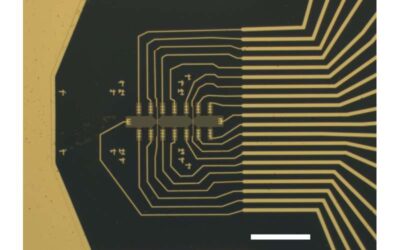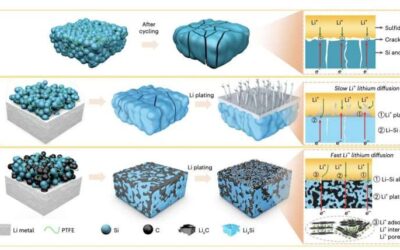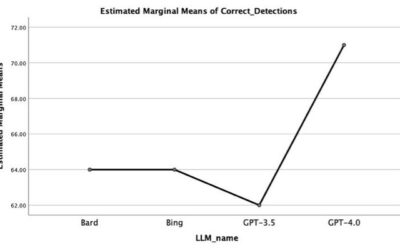Transparent electronic devices could have numerous valuable real-world applications. Among other things, they could enable the creation of new optical devices, smart gear or wearables, invisible solar panels and integrated communication systems.
TECHXPLORE
A CMOS-compatible spintronic compute-in-memory macro to secure AI edge devices
Edge computing applications, which entail the processing and storage of data at the source of its production (i.e., near where it is created), is now being applied to a growing number of technologies. The application of edge computing translates into devices that can...
An approach to enhancing relaxors for energy storage devices
Relaxor ferroelectrics are materials with ferroelectric properties and high electrostriction (i.e., the ability to contract or deform in response to electric fields). These materials can be used to create highly efficient energy storage devices, such as capacitors.
A polyamide-based soft jellyfish robot actuated by a shape memory alloy
In recent decades, roboticists have been developing increasingly sophisticated robots inspired by nature and living organisms. By realistically emulating biological processes and animal behaviors, these robots can often navigate different environments and tackle...
A new strategy to design high-entropy electrolytes for lithium metal batteries
To satisfy the growing demands of the electronics industry, engineers and material scientists are trying to continuously improve the performance of battery technologies. Lithium (Li) metal batteries, batteries with a metallic Li anode, are among the most well-known...
A new self-cleaning salt molecule to improve the performance of lithium metal batteries
Lithium (Li) metal batteries, batteries that contain a metallic Li-based anode, are currently used to power a wide range of electronic devices. Most of these batteries contain carbonate-based electrolytes, which are unable to passivate the corrosion of the lithium...
New gate-tunable and high-mobility devices based on strontium titanate
Strontium titanate (SrTiO3), an oxide of strontium and titanium with a perovskite structure, has many advantageous properties, including spin-orbit coupling, electrical tunability, and unconventional superconductivity. Compared to the superconductivity of conventional...
New carbon-stabilized Li-Si anodes for all-solid-state Li-ion batteries
All-solid-state batteries (ASSBs)—battery technologies with solid electrodes and solid electrolytes—have become the focus in an increasing number of research studies. This is primarily because they could significantly outperform batteries with liquid or polymer-based...
Researchers introduce transparent optical imager with near-infrared sensitivity and touchless interface
Most existing devices are operated via the sense of touch, either via touchscreens or mouse, remote controls, keyboards, and other equipment. Some engineers, however, have been trying to introduce alternative interfaces that do not require users to touch anything, as...
Evaluating the ability of ChatGPT and other large language models to detect fake news
Large language models (LLMs) are an evolution of natural language processing (NLP) techniques that can rapidly generate texts closely resembling those written by humans and complete other simple language-related tasks. These models have become increasingly popular...

